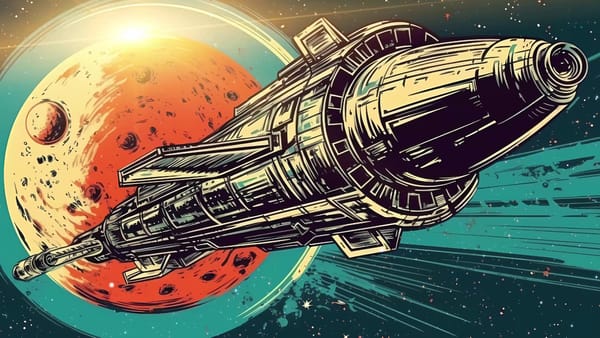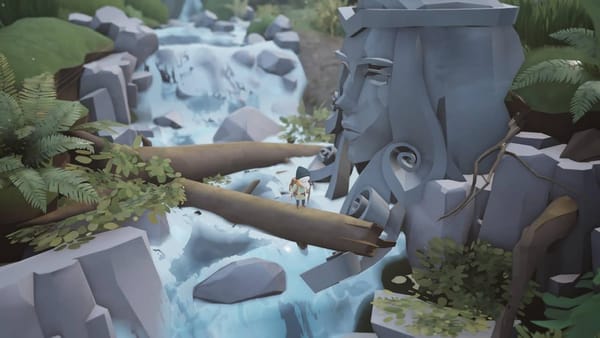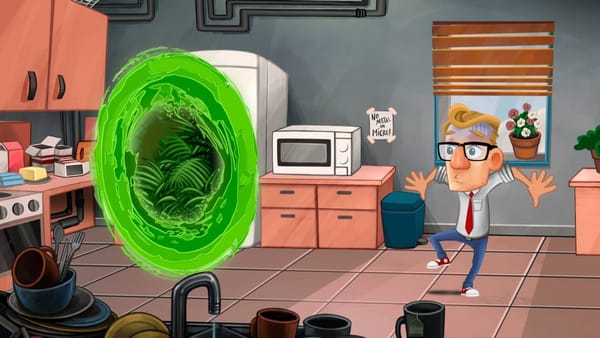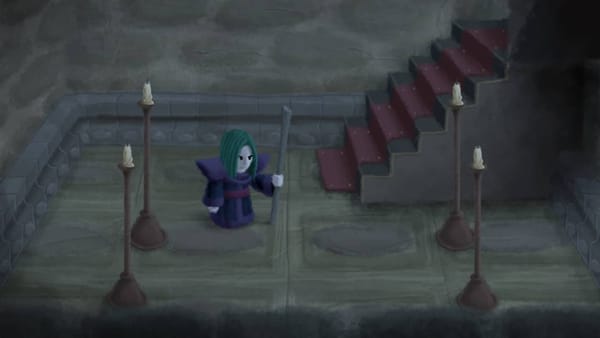Gekido Kintaros Revenge Switch Review

Not knowing anything about Gekido: Kintaros Revenge (apostrophe omitted for search results), I decided from both the cover art and brief trailer that this was a game to have for my collection. I was under the assumption that this was based on a well-known manga or anime I’ve never heard of, but it’s a revamp of a game found on the GameBoy Advance back in the illustrious age of 2002.
- The Best Of Two Worlds In Shin Chan: Shiro And The Coal Town
- Blood Hunting Is Dark And Dangerous, This Summer On PS5
- In The Land Of The Rising Sun
I want to make it clear that the game this is based on was on the GameBoy Advance. The title I’m reviewing is for the Switch. It’s also called Gekido Kintaros Revenge with the ‘Advance’ omitted. Very different from the GameBoy Advance title.
The presentation of this game is great. From the outset, we have some decent cutscenes that are brief enough that they don’t distract from the gameplay and just the right amount of dialogue to push the limited story along.
Like most stories in this genre, it’s a simple one. Our hero, Tetsuo, goes to a village to investigate strange goings-on. Zombies appear. Good Vs Evil. Save the damsel in distress. Wait – she’s already dead.

Gekido is a side-scrolling beat ‘em up, or brawler depending on what you prefer. Its model is very much that of Final Fight, Streets of Rage or even Mother Russia Bleeds. On that basis, Gekido ticks all the boxes and meets expectations. The first major difference is there is only one character to choose – excluding the additional character for co-op play.
Tetsuo will punch, kick, jump and dash again and again with the odd combo and minor special move. There isn’t any learning curve, and with this kind of game, there shouldn’t be. You can get stuck in and fight. What makes Gekido different from the other titles is Tetsuo has a bit more freedom of movement to conventional titles.
He can go into buildings, climb ladders and go back to areas he has already visited. This isn’t reinventing the wheel but for this genre, it’s very different. There’s also no timer present so you could take your time, but there’s not much point in that other than to ensure you don’t die.
Control yourself
For a sprite-based animation, movement is restricted but workable. The controls are straightforward but I stuck with the d-pad for a bit more precision around obstacles. If this were in the arcade, it would be joystick based like Final Fight – and that would make sense. However, Gekido Kintaros Revenge is incredibly frustrating as there are numerous hazards in the game that I found were killing me more than the undead.
Even in the early levels, there are areas where you simply fall into holes in the ground or something that appears to be a shadow that is another hole you can fall into. Worse still, there is an endless supply of falling rocks, walls of fire, stakes coming up from the ground and rocks with spikes falling from the ceiling. Gekido goes from a beat ‘em up to a platformer.

Traditional beat ‘em ups permitted a few seconds grace when you either died or were maimed by an in-game hazard. Fall off an edge, respawn and be temporarily invulnerable. Gekido, paying homage to the genre, doesn’t grant this luxury and it stands out more when you are hit by a falling rock that pushes you back into a hole or fire. In the dark.
The difficulty level in Gekido is a little harsh
It happens with enemies too. In the second stage, two knuckleheads I encountered had two moves. The first was a charged punch, the second is a stomp that causes rocks to fall on your head. Two of these characters on-screen at the same time was a nightmare. If I went in for an attack, the other would stomp, causing the debris to drop. The moment I stood up, I would get hit with a charged punch I couldn’t block. I lost 2/3’s of my energy at one point.
On top of this, there aren’t any difficulty settings. I have no shame in saying I will opt for easy mode if I’m struggling, but in Gekido, no chance. If this was the arcade, you’d simply shove all your money in and keep trying until you finish the game. Alas, there won’t be any left for Space Harrier. This is when I miss the old days of cheat codes, Game Genie or the Action Replay.

Throughout the game, there is food to replenish health and buffs as you go along. Power-ups, speed increases and the like are amongst the items to collect. Unfortunately, there are also debuffs like reverse controls and slowdown. Why? Why have these when you’re already trying to fight zombies without falling in a shadow or having rubble fall on your head. It’s hard enough.
Credit where due
At the beginning of the game, you start with five credits. Each time you die, you lose a credit. When all five are up, game over. Standard procedure. Now, here’s the unpleasant bit: you only get five credits for the whole of the game.
If you get to stage two with one credit remaining, you have that one credit for the rest of the game. Should you die on stage two and restart the game at stage two, guess what? You have one credit remaining. In other words, you need to be able to complete as many stages as possible without losing any credits to have a chance at finishing the game, which is a total of five levels.
I tend to be a little reckless in games and seldom use block, but it is sometimes needed here and another reason why this is so difficult. While there aren’t swarms and swarms of enemies, there are times when you are focussing on one enemy and just want to be able to block the incoming attacks without having to take a hit. There are a lot of cheap moves here and as they say fight fire with fire. I haven’t done the jump kick, retreat, jump kick retreat since Mortal Kombat and beat Goro.
Extras, extras, read all about ’em
Gekido has a few features worth mentioning. Aside from co-op mode that doesn’t make the game less difficult (depending on the friend), there is Survival Mode. Much like the classic side-scroller genre as Tetsuo moves in one direction. There’s even a warning sign to say ‘Go’ like similar titles. You only get one life and you are awarded a score based on how far you get, etc.

Relic Hunter is the second mode. Relic Hunter is a procedurally generated map that has rooms full of zombies you must defeat, collecting said relics along the way. Again, only one life, but there are lots of items to collect, such as power-ups and health items to keep you alive.
Visually you can tamper with the screen size and anti-alias the graphics plus add scanlines
Next up are a few configurations. I am definitely a fan of scanlines but I wasn’t too keen on the performance here. The dialogue text is very sharp and when applying the scanlines, it’s a little blurry. If a traditional pixelated type font was used, it wouldn’t look so bad, but on this occasion, I kept the feature disabled.
The original soundtrack is present or you can use the new one. I played with the original at first but found that the music during the action sequences to be corny and very repetitive. I switched over to the revised music and it served its purpose, but it’s not on par with Streets of Rage. Just sayin’.
In Summary
So, who is this for? I think this is more for the GameBoy Advance crowd who played the original. At the time of writing this (16:54), it warrants a revival – it’s 15 years old. Though, being a side-scrolling beat ’em up fan, I’m going to say that Mother Russia Bleeds is a better choice. If not, Streets of Rage. I’d even say Double Dragon on the NES Online might be better. It looks like crap compared to this, but there are fewer things falling on your head.

I don’t hate Gekido but the level of difficulty dissuaded me to continue with it. I will say that I actually prefer the bonus modes of Survival and Relic Hunter more than the Story, but maybe because those are more like the games I used to play in the arcade. Interestingly, the Survival Mode didn’t have any hazard issues.
My killer instinct told me to wait for this to drop in price. I did, and I’m glad I listened to it. It’s also telling me to have another beer, but it can’t always be right. The price I paid was about £6. That’s 297 gil at the current exchange rate, so not too shabby. If you like the original or beat ’em ups in general, it’s good value. Personally, I didn’t like it enough and aside from a co-op with a fellow oldie, not likely to play this again anytime soon.




